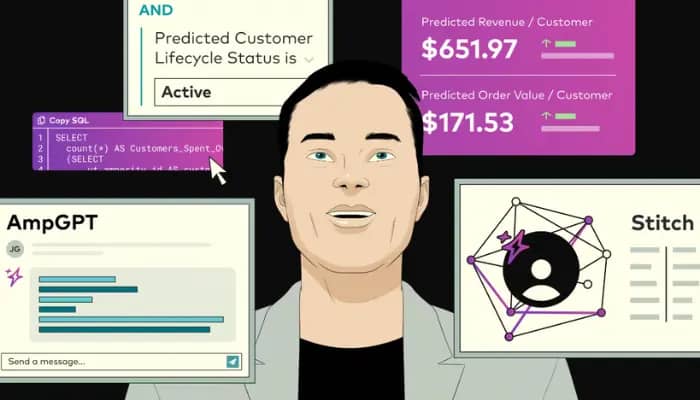Generative AI (GenAI) is creating new possibilities in digital marketing. However, to truly benefit from this technology, marketers need a well-crafted strategy and careful execution. This article offers practical advice for marketers looking to leverage GenAI based on insights from industry experts.
In celebration of AI Appreciation Day, we spoke with marketing and AI experts on what this day signifies and the shifts marketers need to be across over the coming year.
Balancing Innovation, Risk, and Feasibility
Jennifer Fleck, Senior Principal at Slalom Consulting, highlights the challenge of scaling GenAI initiatives:
“Experiments are easy, but scale is hard. Most of the GenAI we see happening at enterprise organizations right now is an ambitious idea that stays in POC purgatory. Selecting use cases that balance innovation, risk, and feasibility and an understanding that AI at scale requires people, process, data, and technology foundations is paramount to success.”
Fleck also suggests focusing on three key areas where GenAI can drive value:
“At Slalom, we see GenAI driving value in three key areas: productivity (doing what you already do but better and faster (doing what you already do in a fundamentally different way), and disruption (changing the essence of your business.).
By considering these areas, marketers can identify the most impactful applications of GenAI for their organizations.
Leveraging AI as a Co-Pilot
Natalie Kansteiner, Director of Data Partnerships at The Trade Desk, recommends using AI as a powerful assistant in digital advertising:
“At The Trade Desk, we see AI as a powerful co-pilot in digital advertising, transforming complex tasks into streamlined processes. To start, focus on leveraging AI for data analysis and audience segmentation. Use AI tools, like Koa AI, to extract insights from vast datasets, ensuring precise targeting and higher engagement rates. Employ real-time optimization to refine campaigns as they run, boosting performance and cost efficiency.
Additionally, leveraging generative AI for creative content generation, while keeping human oversight to ensure brand alignment, can be highly effective. By combining AI’s analytical power with strategic human input, marketers can create more data-driven and impactful advertising campaigns.”
Kansteiner’s advice underscores the importance of using AI to enhance various aspects of digital marketing while maintaining human oversight for strategic decisions and brand consistency.
Being Prepared to Pivot
Jay Pattisall, VP and Principal Analyst at Forrester and Lisa Gately, Principal Analyst at Forrester, emphasizes in their report “Advance GenAI Marketing From Pilot Projects To Proficiency” the importance of adaptability in the rapidly changing world of AI:
“Be prepared to pivot given the rate of change in the AI world. GenAI adoption involves managing persistent change and turning setbacks into successes. Promote and reward adaptability within the marketing organization as your pilot projects reveal what’s viable and the best uses. Encourage marketers to share what they’ve learned, including areas that aren’t the best use cases. Your team will thrive as a result.”
This advice highlights the need for flexibility and a culture of continuous learning when implementing GenAI in marketing strategies.
Starting Small and Measure
Joyce Gordon, Head of Generative AI at Amperity, emphasizes the importance of starting with small, measurable use cases. She advises:
“My advice to brands and organizations when rolling out AI: start small. I recommend starting with a small use case that’s highly measurable and one that doesn’t require major change. One place where marketers have seen a lot of success is just with subject line optimization or optimizing the body of emails or paid media ads. Since you can have a human in the loop here, it’s a great opportunity to experiment with creating different segmentation strategies and different messages. And it’s also really easy to measure and determine if those approaches are working or not.”
This approach allows for experimentation without major disruptions and provides clear metrics to evaluate success. Marketers can gain valuable insights and experience with GenAI by starting small before scaling up to more complex applications.
Reverse Engineering for Success
Mike Edmonds, Sr. Director of AI Strategy, Global Retail and Consumer Goods, Microsoft advises: “Work backwards from the unmet needs and opportunities that your customers and employees face. The features and capabilities of generative AI are incredible – and with the exponential pace of change and advancements, the capabilities to come will be even more impressive. Brands and businesses that harness these powerful capabilities to unlock productivity, unleash creativity, and augment human potential will have the biggest impact. The Copilot metaphor at Microsoft not only references our technology stack, but also inspires brands and businesses to explore how every person and organization on the planet can achieve more in the era of AI transformation.”
Integrating Human Input with AI Capabilities
While AI offers powerful analytical capabilities, strategic human input remains crucial. Marketers should strive to find the right balance between AI-driven insights and human creativity and judgment. This integration allows for the best of both worlds: the data-processing power and pattern recognition of AI combined with the nuanced understanding and creative thinking of humans.
By maintaining this balance, marketers can ensure that AI-generated content and strategies align with brand values and resonate with target audiences. Human oversight also helps to catch and correct any potential biases or errors in AI-generated outputs, ensuring the highest quality of marketing materials and strategies.
As GenAI continues to change the marketing landscape, those who implement it thoughtfully and strategically will have the greatest success. Start small with measurable outcomes, balance innovation with feasibility, and use AI as a co-pilot while staying adaptable. By viewing AI as a tool to enhance, not replace, human marketers, you can drive more efficient, effective, and impactful campaigns. This approach leads to new levels of creativity and performance in marketing efforts.

















